Extrasensory perception (ESP), also known as a sixth sense, or cryptaesthesia, is a claimed paranormal ability pertaining to reception of information not gained through the recognized physical senses, but sensed with the mind. The term was adopted by Duke University botanist J. B. Rhine to denote psychic abilities such as intuition, telepathy, psychometry, clairvoyance, clairaudience, clairsentience, empathy and their trans-temporal operation as precognition or retrocognition.

Persistence of vision is the optical illusion that occurs when the visual perception of an object does not cease for some time after the rays of light proceeding from it have ceased to enter the eye. The illusion has also been described as "retinal persistence", "persistence of impressions", simply "persistence" and other variations. A very commonly given example of the phenomenon is the apparent fiery trail of a glowing coal or burning stick while it is whirled around in the dark.

In biology, binocular vision is a type of vision in which an animal has two eyes capable of facing the same direction to perceive a single three-dimensional image of its surroundings. Binocular vision does not typically refer to vision where an animal has eyes on opposite sides of its head and shares no field of view between them, like in some animals.

Charles Robert Richet was a French physiologist at the Collège de France and immunology pioneer. In 1913, he won the Nobel Prize in Physiology or Medicine "in recognition of his work on anaphylaxis". Richet devoted many years to the study of paranormal and spiritualist phenomena, coining the term "ectoplasm". He believed in the inferiority of black people, was a proponent of eugenics, and presided over the French Eugenics Society towards the end of his life. The Richet line of professorships of medical science continued through his son Charles and his grandson Gabriel. Gabriel Richet was also one of the pioneers of European nephrology.

Retinitis pigmentosa (RP) is a genetic disorder of the eyes that causes loss of vision. Symptoms include trouble seeing at night and decreasing peripheral vision. As peripheral vision worsens, people may experience "tunnel vision". Complete blindness is uncommon. Onset of symptoms is generally gradual and often begins in childhood.
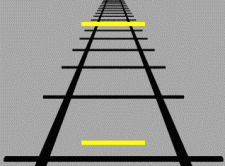
The Ponzo illusion is a geometrical-optical illusion that was first demonstrated by the Italian psychologist Mario Ponzo (1882–1960) in 1913. He suggested that the human mind judges an object's size based on its background. He showed this by drawing two identical lines across a pair of converging lines, similar to railway tracks. The upper line looks longer because we interpret the converging sides according to linear perspective as parallel lines receding into the distance. In this context, we interpret the upper line as though it were farther away, so we see it as longer – a farther object would have to be longer than a nearer one for both to produce retinal images of the same size.
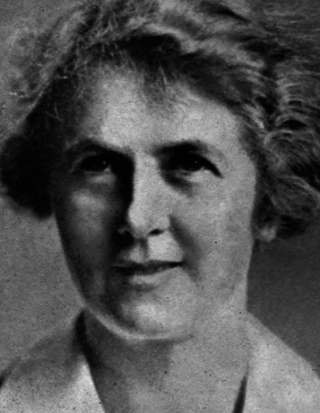
Mina "Margery" Crandon was an American psychic medium who said that she channeled her dead brother, Walter Stinson. Investigators who studied Crandon concluded that she had no such paranormal ability, and others detected her in outright deception. She became known as her alleged paranormal skills were touted by Sherlock Holmes author Sir Arthur Conan Doyle and were disproved by magician Harry Houdini. Crandon was investigated by members of the American Society for Psychical Research and employees of the Scientific American.
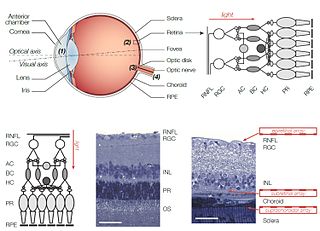
A retinal implant is a visual prosthesis for restoration of sight to patients blinded by retinal degeneration. The system is meant to partially restore useful vision to those who have lost their photoreceptors due to retinal diseases such as retinitis pigmentosa (RP) or age-related macular degeneration (AMD). Retinal implants are being developed by a number of private companies and research institutions, and three types are in clinical trials: epiretinal, subretinal, and suprachoroidal. The implants introduce visual information into the retina by electrically stimulating the surviving retinal neurons. So far, elicited percepts had rather low resolution, and may be suitable for light perception and recognition of simple objects.

Joe Nickell is an American skeptic and investigator of the paranormal.

William Hope was a pioneer of so-called "spirit photography". Based in Crewe, England, he was a member of the well known spiritualists group, the Crewe Circle. He died in Salford hospital on 8 March 1933.

Arthur Ford was an American psychic, spiritualist medium, clairaudient, and founder of the Spiritual Frontiers Fellowship (1955). He gained national attention when he claimed to have contacted the dead son of Bishop James Pike in 1967 on network TV. In 1928 Ford claimed to have contacted the deceased spirits of Houdini's mother and later in 1929 Harry Houdini himself.
Parallax scanning depth enhancing imaging methods rely on discrete parallax differences between depth planes in a scene. The differences are caused by a parallax scan. When properly balanced (tuned) and displayed, the discrete parallax differences are perceived by the brain as depth.
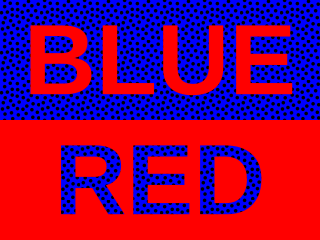
Chromostereopsis is a visual illusion whereby the impression of depth is conveyed in two-dimensional color images, usually of red–blue or red–green colors, but can also be perceived with red–grey or blue–grey images. Such illusions have been reported for over a century and have generally been attributed to some form of chromatic aberration.
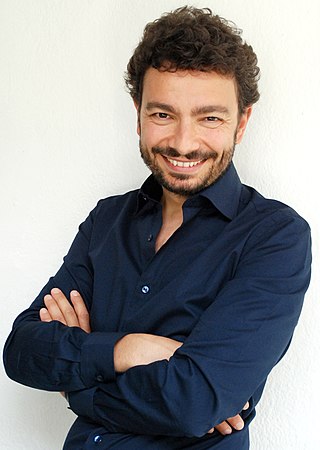
Massimo Polidoro is an Italian psychologist, writer, journalist, television personality, and co-founder and executive director of the Italian Committee for the Investigation of Claims of the Pseudosciences (CICAP).
Visual perception is the ability to interpret the surrounding environment through photopic vision, color vision, scotopic vision, and mesopic vision, using light in the visible spectrum reflected by objects in the environment. This is different from visual acuity, which refers to how clearly a person sees. A person can have problems with visual perceptual processing even if they have 20/20 vision.
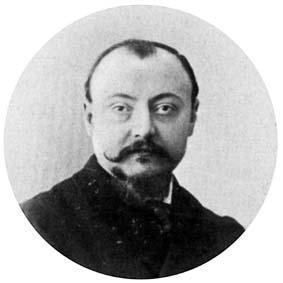
Gustav Geley was a French physician, psychical researcher and director of the Institute Metapsychique International from 1919 to 1924.

Photovoltaic retinal prosthesis is a technology for restoration of sight to patients blinded by degenerative retinal diseases, such as retinitis pigmentosa and age-related macular degeneration (AMD), when patients lose the 'image capturing' photoreceptors, but neurons in the 'image-processing' inner retinal layers are relatively well-preserved. This subretinal prosthesis is designed to restore sight by electrically stimulating the surviving inner retinal neurons, primarily the bipolar cells. Photovoltaic retinal implants are completely wireless and powered by near-infrared illumination (880 nm) projected from the augmented-reality glasses. Lack of trans-scleral cable greatly simplifies the implantation procedure compared to other retinal implants. Optical activation of the photovoltaic pixels allows scaling the implants to thousands of electrodes and retains natural coupling of the eye movements to visual perception. Studies in rats with retinal degeneration demonstrated that prosthetic vision with such subretinal implants preserves many features of natural vision, including flicker fusion at high frequencies (>20 Hz), adaptation to static images, antagonistic center-surround organization and non-linear summation of subunits in receptive fields, providing high spatial resolution.
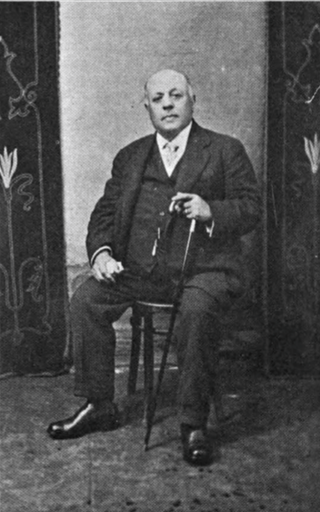
Bert Reese (1851–1926) was an American-Polish medium and mentalist, best known for his billet reading demonstrations.

Joaquín María Argamasilla de la Cerda y Elío was a Spanish noble who was the 11th Marquess de Santacara, but he is better known for claiming in the early 1920s a supposed ability to see through opaque objects. Argamasilla convinced important people of the era such as Gustav Geley and Charles Richet of his powers, but he was exposed by Harry Houdini as a fraud in 1924.
Gregory H. Razran was a Russian American expert on Russian psychological research. He left Russia in 1920 and studied at Columbia University gaining a doctorate in 1933. He moved to Queens College, City University of New York in 1940 where he became a professor and headed the Psychology department there from 1945 to 1966. He received a Guggenheim Fellowship in 1948.














